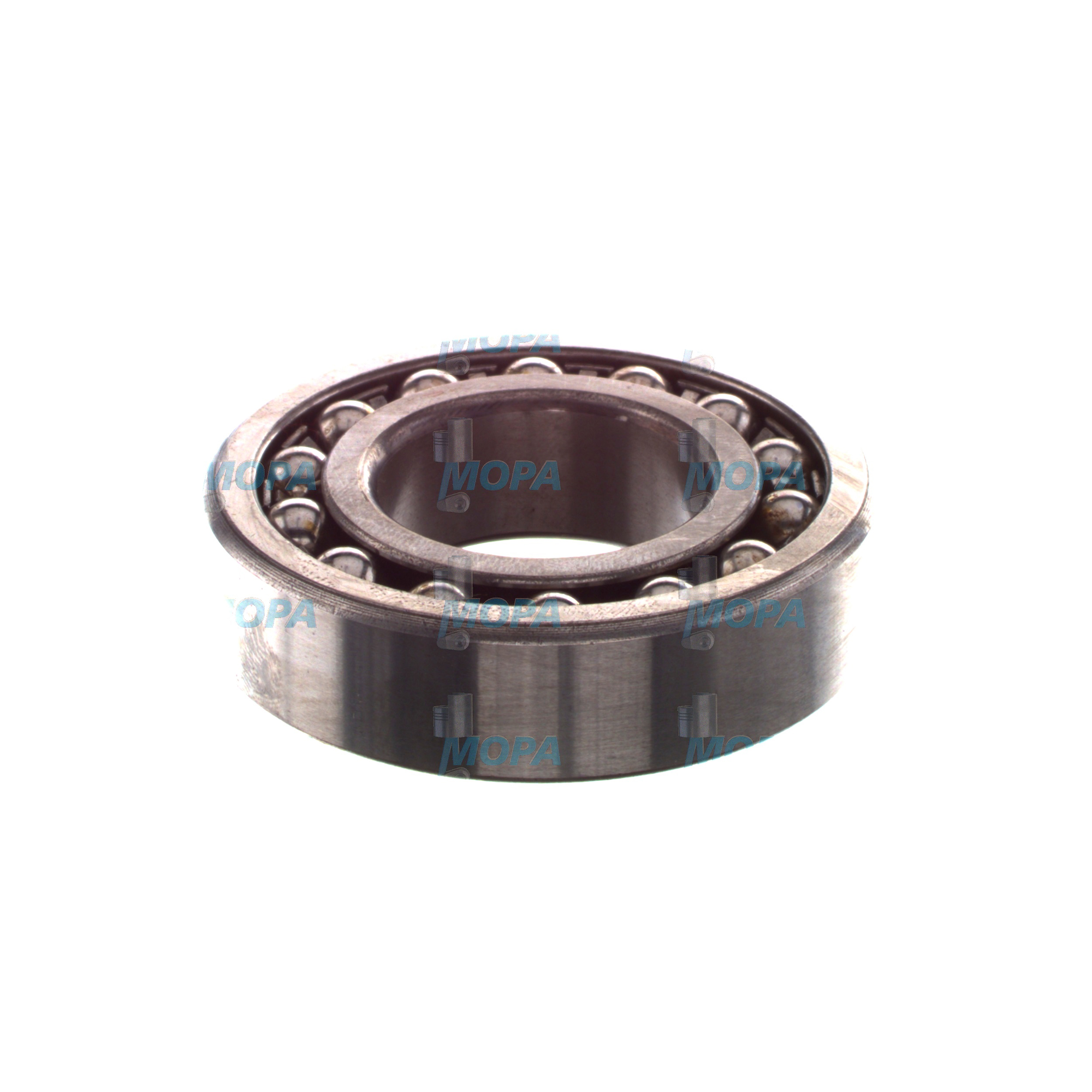BALL BEARING and Bearings for Diesel and Marine Engines
Bearings are precision components that control and support rotating and oscillating parts in an engine while minimizing friction and wear. In heavy-duty applications such as a marine engine or a high-output diesel engine, Bearings keep shafts aligned, maintain clearances under load, and ensure that moving assemblies run smoothly. From crankshaft mains and connecting rods to camshafts, geartrains, pumps, alternators, and turbochargers, the right bearing technology—plain, roller, or BALL BEARING—directly influences output, efficiency, and uptime. Selecting and maintaining the correct Bearings is therefore a core responsibility for purchasers and technical decision-makers who demand reliability at sea and on land.
Technical function of Bearings and BALL BEARING in a diesel engine
In engines, Bearings perform two essential functions: they carry radial and axial loads and they control motion with minimal energy loss. Plain (hydrodynamic) bearings—common in crankshaft mains and connecting rods—use a pressurized oil film to separate surfaces. At speed, the journal rides on a wedge of oil a few micrometers thick, preventing metal-to-metal contact. This film, supported by precision geometry and materials such as steel-backed shells with alloy overlays, stabilizes the rotating assembly and dissipates heat.
Rolling-element Bearings, including the BALL BEARING, are used where low-friction starts, tight axial control, and compact design are critical—typical in turbochargers, accessory drives, alternators, and gearboxes. A BALL BEARING in a diesel engine accessory can reduce frictional losses, lower operating temperatures, and improve belt life. In a marine engine turbocharger, high-speed ceramic or steel BALL BEARING designs control both radial and thrust loads, enabling faster spool-up and sustained operation at elevated temperatures. For long life, these Bearings rely on correct preload, cage design, lubrication (oil-mist or sealed grease, depending on application), and precise fits between shaft and housing.
Performance hinges on details: hardness and surface finish of races and balls, cage material (steel, brass, polyamide), heat-treatment consistency, and tolerance class (e.g., P5 or ABEC equivalents for high-speed units; C3/C4 clearances for thermal expansion). Engineered seals and shields retain lubricant and exclude contaminants, which is essential where salt air, vibration, and thermal cycling are present.
- · Low-friction motion for higher mechanical efficiency and reduced fuel consumption.
- · Accurate control of radial and axial loads to protect gears, rotors, and shafts.
- · Thermal stability through correct clearances (e.g., C3/C4) and controlled preload.
- · Robust materials: hardened races and balls, proven overlays for plain bearings.
- · Optimized lubrication paths, oil grooves, and surface finishes for film stability.
- · Sealing solutions that keep debris out and lubricant in, even in harsh marine environments.
- · Tight dimensional tolerances for drop-in fit with engine housings and carriers.
- · Validated load ratings and speed capability for turbochargers and accessory drives.
Why Bearings and BALL BEARING are critical for engine reliability and service life
Reliable Bearings minimize vibration, heat, and mechanical losses—factors that directly relate to uptime and total cost of ownership. When Bearings wear or lose correct clearance, the effects cascade quickly: oil films collapse in plain bearings, friction rises, and localized heat accelerates material fatigue. In rolling-element units, issues such as brinelling, spalling, or cage fracture produce noise, shaft runout, and escalating vibration that can damage adjacent components.
Typical failure triggers include contamination (abrasive particles in oil), misalignment, incorrect preload, lubrication starvation, and thermal expansion not matched by the selected clearance class. In a BALL BEARING for marine engine turbochargers, even small debris can initiate pitting that grows into catastrophic race failure. For crankshaft and camshaft plain bearings, edge loading and cavitation can wipe overlays and introduce metallic debris into the lubrication system, risking seizure. Preventive measures include proper installation (controlled heating, press-fit tolerances), clean assembly practices, adherence to specified oil quality/viscosity, and condition monitoring—vibration analysis and oil analysis for metals such as tin, lead, and copper.
Advantages of OEM spare parts suitable for Bearings and BALL BEARING OEM parts
For purchasers and shipowners, choosing OEM spare parts suitable for Bearings is a direct investment in predictable performance and lifecycle cost. Components built to the engine maker’s drawings and specifications deliver the exact geometry, metallurgy, and surface finish required for the intended duty cycle. That precision preserves the intended oil-film thickness in plain bearings and the designed load distribution in a BALL BEARING, safeguarding efficiency and shaft alignment.
Critical advantages include controlled material traceability and heat treatment, consistency across batches, and validated clearance classes matched to thermal profiles in a diesel engine. With these elements in place, maintenance intervals extend, unplanned off-hire risk decreases, and installation time is reduced due to true drop-in compatibility. Documentation and test data accompanying OEM parts streamline compliance with yard procedures and classification society requirements, while proven seals and cages enhance durability in demanding maritime environments.
MOPA: your partner for OEM spare parts Bearings and BALL BEARING for diesel and gas engines
MOPA supplies OEM spare parts suitable for Bearings with an emphasis on speed, quality, and security. Our network enables fast RFQ turnaround and dependable availability for both diesel and gas engines, including critical BALL BEARING assemblies for turbochargers and accessory drives. Every delivery is managed with strict parts identification, batch traceability, and packaging designed for corrosion protection during ocean freight.
Customers value our technical support in selecting the right tolerance class, clearance, and sealing options for the operating profile—be it continuous marine propulsion or variable-load power generation. MOPA’s processes include authenticity checks for OEM parts, comprehensive documentation, and logistics solutions that meet tight docking schedules. The result is a streamlined procurement experience that keeps engines running efficiently and safely.
Conclusion: Bearings and BALL BEARING keep engines efficient and safe
Bearings—plain, roller, and BALL BEARING—are fundamental to engine performance, efficiency, and reliability. Precision components built to the correct specification protect rotating assemblies, reduce energy losses, and extend service life.
By selecting OEM spare parts suitable for Bearings and critical BALL BEARING units, decision-makers secure consistent quality, predictable maintenance planning, and dependable uptime for diesel and marine engine fleets.


